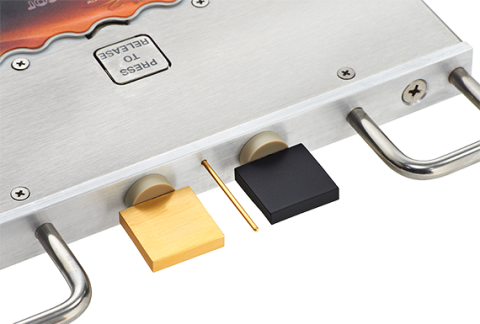A heat flux recorder from Reading Thermal is an excellent investment. It will provide a better way to measure energy transfer in your oven and help you avoid producing baked goods of poor quality.
Reading Thermal, headquartered in Sinking Spring, Pennsylvania, has researched the commercial baking process for more than 25 years. We manufacture and support the state-of-the-art SCORPION® 2 Profiling System and Data Logger that has become a standard in the baking industry.
What is Heat Flux?
Oven heat flux refers to energy transferred per unit area per unit time from or to a surface. It is the best non-intrusive indicator of the performance of ovens during baking in terms of the product.
Heat transfer follows three different modes of heat transfer during baking – radiation, convection, and conduction – and heat flux involves all three components. Every product will have its unique mix of these components and its own heat flux profile. There is no single optimal heat flux profile for all products.
Some product characteristics are defined by the amount and type of heat applied during the baking process. The differences explain why one oven bakes differently than another. And analyzing and controlling these differences is critical to understanding how the finished product characteristics will be affected.
The SCORPION® 2 Heat Flux Sensor measures radiant and heat fluxes at product level and displays the results in Btu/hr·ft2 or convective W/m2.
Analyzing the Results
From above the conveyor, the Heat Flux Sensor measures the flow of energy experienced by the product and identifies which modes of heat transfer are predominant.
Raw data from the sensor consists of several temperature measurements at precise locations in the sensor assembly. A mathematical model representing the physical measurement system is applied to the measured values via the SCORPION® Software (SV8). The resultant heat flux components – Qradiant, Qconvective, and Qtotal – are displayed in a 2D Line Graph against time, distance, or % travel through the process.
SCORPION® Case Study: Making the Same Product on Multiple Lines
A company has four production lines that bake soda crackers in three different plants across Central America. A new line was recently installed, but the best product comes from an over 20-year-old line.
How can the new line produce crackers that will match the quality of the older production line?
Reading Thermal’s solution changed the oven temperature profiles to better match the Total Heat applied to the product so that the lines produce the same product.
Bake your products to perfection with a heat flux recorder and data logging system from Reading Thermal. Contact us online or call us at (610) 678-5890 Ext. 2 for more information.

